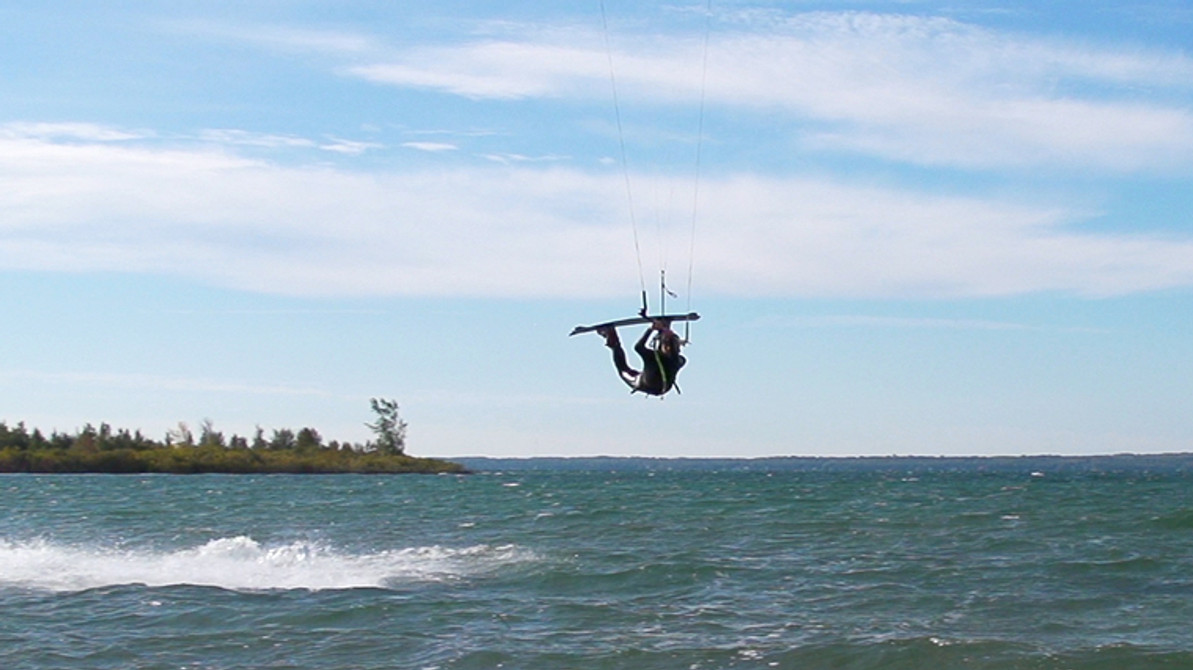How to do an unhooked raley
The Raley
Level: Basics
Difficulty: 2 of 10
Today we’re going to break down the raley. This is usually the first trick aspiring freestyle or wakestyle riders learn. It’s a must if you hope to progress into any other air tricks as they all stem from this basic maneuver. Best of all, it’s a lot easier than you think. While not overly difficult, the raley is at the heart of most freestyle tricks. Loads of tricks start with the raley and incorporate rolls or spins.
For example, a Blind Judge 3 is a raley followed by a backside three-sixty handle pass. The S-Bend is a full raley mixed with a front roll, provided you do the roll after the raley and keep your legs above your head. What I'm getting at is, all the advanced tricks are combinations of the basics. Which is the aim of this series: to help you master the basic tricks so you can progress into more advanced riding.
What's next?
Once you get the raley dialed, you’ll want to mix in some grabs, you can add a frontside 180, also known as an air krypt, or you can take it to blind. Remember, mastery is nothing more than the repetition of the basics, and these are the fundamentals of all tricks.
Difficulty scale
Depending on who you ask, some will tell you the raley is difficult, as most kiteboarders don’t unhook, but really it’s as basic as tricks get. On the scale of one-to-ten, the raley is about a two. The prerequisites for this trick are the unhooked pop, jumping riding upwind, and a bit of commitment to the maneuver.
We’ll break this trick down into 4 steps: loading, the release (or scoop), body position, and landing.

Don't bend at your hips
Step One - Loading
If you watched our video on popping, everything covered in that video applies to the raley. We'll be taking your loading to a higher level on this one as it's an essential skill for progression. When it comes to a powerful load, posture is really important. So make sure you have good form.
As in the article I wrote about popping, load the lines up while hooked in, before unhooking. The idea is that you can get a lot more power into the lines without exhausting yourself or chickening out with all that power in your arms. You're also setting the kite up in the prime position to make everything explosive.
Keep your kite parked between 10 or 11 and 1 or 2. Roll your shoulders back and keep your hips up. The faster you go and the further back you load, the higher your raley is going to be. Start to edge against the kite until the kite has a decent amount of power. If you practiced the tips from the popping article, this step should be easy.
In a fluid motion, ride slightly downwind to take off some line tension and unhook. Now, immediately lean back and start edging upwind. It’s important to pay attention to the pressure building up in your lines. You can control how much pressure by how hard you edge against the kite.
As before, roll your shoulders back and keep your hips up. The further back you lean, the higher your raley is going to be. The closer your back is to the water, the higher you will go; granted, you need to lean back as far as the power necessitates. A quick, powerful snap is better than a long, leaned-back pop. If you lean too far, you’ll choke out the kite as well. The trick is doing all of this in a fast, fluid movement. You can not hesitate. Remember, just like in our video on popping, you don’t want to bend at the hips or come off your edge; this will take power out.

Carve away and pop off the "Ramp"
Step Two - The Scoop & Release
This step is a bit different from wakeboarding or cable boarding. You should feel all that tension loaded up in your lines. Now you’re going to carve away from the kite and scoop your board. You want to push hard off your back heel to initiate the scoop.
It’s important to push hard with the back of your heel, as many people subconsciously come off edge a little to take power out of this step. If you're doing this, you won’t go very high and it's easy to catch an edge on re-entry.
Imagine you're creating a ramp in the water and now you have to pop out of the ramp. That’s what the scoop is: pushing hard on your back leg, and throwing your legs and board out behind you. You’ll point your toes to scoop as your board exits the water.
For an ideal scoop, your board will be sitting deep in the water with a powerful edge, As you lean back to load, you'll push down mostly on your back leg and a little on the front leg. Carve away from the kite as you do this. You will feel the kite pull you forward and rip you off the water. Keep your hips strong and pushing forward while all of this is happening. If you bend at the hips, you will choke out the power. Scoop the board out of the water, throw your hips up, and point your toes.

Get your legs above your head
Step Three - Body Position
As the kite rips you off the water, your legs should go flying up behind you. Some people like to toss their legs above their head for a powered raley. Others turn their body to the side a bit, keeping the board more level with their body. This usually happens when you scoop and release a little late. If you release late on the scoop, you’ll come up with your body facing one side, and your board will be at an angle.
I've heard some wakeboarders call this stargazing. Personally, I think there is a time and a place for it, especially paired with grabs. The general consensus is that in an ideal raley, your legs will go evenly above your head.
While in the air, keep a slight bend in your arms and throw your arms above your head. Let your legs scorpion behind you, coming just above your head as well.
Arm position
The next thing to think about is your arms. You can either lock them out and go for a full superman or you can keep the bar closer to your face or chest. Practice both, as they are useful when you advance to other tricks. This comes back to personal style and what other tricks you're going to combine with the raley later. Most important is developing body awareness so later you can be conscientious about how you approach more advanced tricks.

More scorpion... More style
Variations
One of the variations you can add would be a shifty. If you want to make the trick look better and add a little more difficulty, try looking a little over your back shoulder while in the air. Your back will turn slightly towards the kite. Now poke your back leg out and bring your front leg slightly into your chest. Start small and don't roll too hard or you will initiate a roll right onto your back. As you start to come down, bring the back leg back in and look back towards your landing to reorient yourself.
You can do this either way. Later, when you are more advanced, you can try to pair a shifty with a 180 rotation. Try to shifty in the opposite direction you plan on rotating.

Always land flat and downwind
Step Four - Landing Right
To land, as you feel yourself starting to drop, look at the water and spot your landing. Pull the control bar hard into your leading hip or even your front knee. This will bring the board back underneath you. This last step is really important for future tricks.
Make sure you point the nose of your board towards the kite and land flat, not favoring any edge. Not only does this look best, but it will take some power out of the kite, allowing you to hook back in. When you touch down, ideally you shouldn't feel much, if any, tension in your kite lines. This of course depends on the type of kite you're using. A freeride kite will most always have some tension, while a freestyle kite should have little to none. Your board will stay on a plane simply due to board speed. After you hook back in, you can lean back into an edge and start riding back upwind.
Final tips
Once you’ve got this trick dialed, now is a good time to get into the habit of flicking your kite down as well. Right before you start dropping and you're pulling the bar to your hip, pull down on your front hand. You can even take your back hand off. This will make the landing look a little more stylish and will help when learning to take this trick to blind.
What to try next:
Now that you’ve learned the raley, you should work on the air kyrpt, frontrolls, backrolls, riding blind and riding wrapped. Most freestyle tricks moving forward are some combination of these tricks. It’s all about mastering the basics as you move forward.
 Ryan (Rygo) Goloversic
Ryan (Rygo) Goloversic
Just a dude from a kite shop testing all the gear one session at a time.
Many people dream of quitting their job, traveling the world and pursuing their passions. Rygo is one of those people who pulled the trigger. A few years into a postal career, he decided to change everything and travel as a kiteboarder, freelance videographer & writer. His mission is to help people and share the stoke. Get out there and kite!
Producer of: Ride with Blake I Sessions I Versus I Destinations I Foil Fridays
Recent Posts
-
Hot New Releases: MACkite Brand Parawing & Mystic Majestic Ex Custom Harness
MACwing v.5 Beta Single Skin Single Use Jake and Ryan from MACkiteboarding unveiled an excit …1st Apr 2025 -
Code Foils 1250R, with Josh Ku and James Casey | Training, Gliding, and Light Wind Downwinding
Introduction: The Rise of the 1250R The Code Foils 1250R is the latest and largest addition to Co …1st Apr 2025 -
2025 F-One Rocket Surf Prone, Rocket Wing Crossover, and Rocket Midlength Boards
Mid-length foilboards are rapidly growing in popularity and could soon dominate the market, especi …27th Mar 2025




